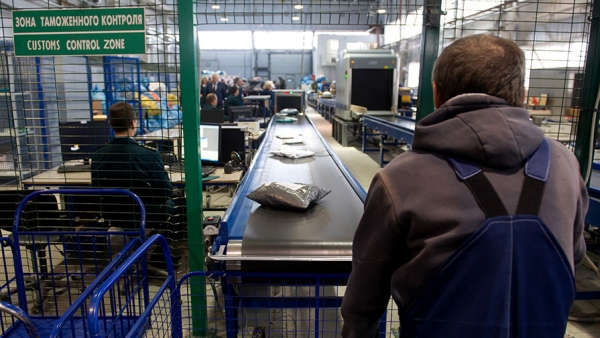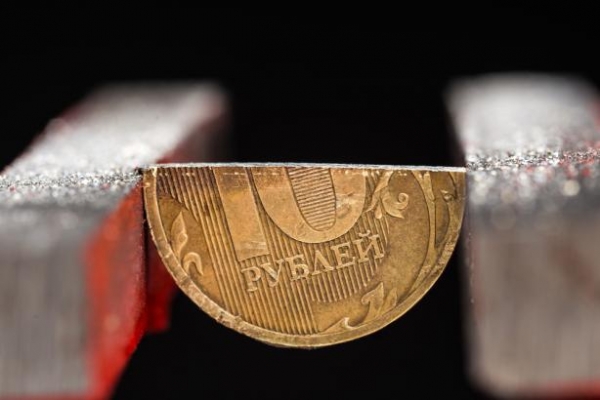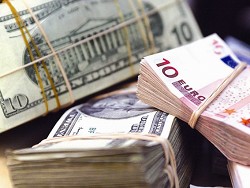
Balance of foreign trade in the first nine months decreased 3.5 times compared with the figure of 2015. The fact that exports are falling and imports are recovering. However, in the next three years the government will continue to reduce the average rate of import tariff and to open the Russian market.
According to the Central Bank, the foreign trade balance in August narrowed to $4,926 billion, the lowest figure since April 2009. The positive balance of the current account of the balance of payments in January – September, according to preliminary estimates, amounted to $15.6 billion, which is 3.5 times less than in 2015.
Russian President Vladimir Putin spoke out against protectionism in world trade, which became increasingly different countries.
“It is regrettable that some countries are trying to solve the accumulated problems through protectionist measures, attempts to create such closed and opaque projects as the TRANS-Pacific partnership or the Transatlantic trade and investment partnership”, — he told in interview of RIA of “news” and the Indian news Agency IANS ahead of the summit of BRICS, which will be held in Goa on October 15-16.
According to Vladimir Putin, Russia and the other BRICS countries continue to support the principle of “open economic spaces, wearing a non-discriminatory and based on the principles of the WTO.”
This position is reflected in the Ministry of economic development published the draft guidelines for customs and tariff policy for 2017-2019.
According to the document, Russia will continue to reduce tariff protection of the market.
The weighted average import tariff rate for imports from foreign countries will be in 2019 by 4.9%. In 2014, she was one-third higher than 7.3 per cent.
Analysis of weighted average rates in different industries shows that the highest level of tariff protection will continue in the coming years for leather goods and furs (12,5%), precious metals and stones (9,5–11,7%), light industry products (7,5–7,9%), metal products (3,8–4,7%) and mineral products (of 4.5%).
“The annual reduction of the basic positions will be up to 1 percentage point”, — the document says.
To reduce tariffs on imports, Russia will be in the framework of the commitments undertaken when joining the world trade organization. This year alone, there will be reduced import tariff for 1771 commodities: 429 for food and 1342 in respect of industrial products.
The head of the MAYOR Alexei Ulyukayev, speaking at the forum “Russia calling!” said that “we are in the trend of our obligations to the world trade organization, reducing our customs.”
“Because we understand that world trade is trade in global value chains. And the need to protect the chain, not this or that factory,” — said the Minister.
However, he also noted that there is now a crisis in world trade, which is reflected in the fact that its growth rates are today two times below the growth rate of the world economy as a whole of 1.7 to 3 percent. According to the plan Ulyukayev, Russia should encourage and increase non-oil exports, which may begin to grow at a rate of 6-7% in 2019. Export growth should contribute to a weak ruble.
But while statistics show that imports grow and exports fall. And, most likely, if not for the Russian retaliatory sanctions, imports would grow even greater.
De facto sanctions — is the only one, not counting the cheap ruble, the tool that contributes to the protection of Russian market from imports.
The reason for the deterioration of the statistics that exports are declining and imports are recovering. TSB has released a batch of fresh statistics on the external sector. According to the latest assessment, published on 12 October, foreign trade by the end of August remained at the level of last year. The volume of exports continued to shrink and amounted to $23,301 billion, which is 7.2% below the level of August 2015. Imports, by contrast, grew by 13% and reached $18,375 billion.
Trade surplus thus amounted to $4,926 billion Last time the size of positive balance less than $5 billion was recorded in February and April of the crisis in 2009 ($4,209 billion and $4,690 billion, respectively).
The growth of imports and decline in exports have a negative impact on the balance of payments. The positive balance of the current account balance of Russia in January – September of 2016, according to preliminary estimates of the Bank of Russia amounted to $15.6 billion in the same period of 2015 amounted to $54.4 billion
“The current account of the balance of payments of Russia was still under the influence of a greater reduction of exports compared to imports, while in the third quarter of this year indicated the unevenness of the speakers have smoothed out somewhat in terms of the recovery of prices in the commodities markets against the rising trend in the dynamics of merchandise imports,” reads the comments of the Central Bank.
A positive role in the formation of the surplus of the current account also played a major compression of the negative balance of services. Net capital exports by the private sector in January – September 2016, according to preliminary estimates, amounted to $9.6 billion versus $48.1 billion a year earlier.
On the background of balanced flows of the banking sector continued to repay foreign obligations over available foreign assets from other sectors of the outflow formed mainly by stepping up purchases of financial assets abroad, explained in the Central Bank.
Sberbank CIB analysts point out that the need to repay foreign debt in 2015, under a floating exchange rate (i.e. in the absence of intervention by the Central Bank) has led to an increase in the positive balance of the current account to the weakening of the ruble and reduce imports.
“This year, companies and banks managed to refinance its debt, and the attractiveness of Russian assets in the eyes of investors seems to have increased. As a result, net capital outflow decreased. Against this background, the surplus in the current account decreased. We believe that the positive balance of the current account for the full year will be approximately $20 billion or less,” Sberbank CIB.
This situation indicates that risks weakening of the ruble increased and that at the moment the Russian currency supported the investors ‘ optimism, analysts stress.
However, the economy is not growing, but foreign direct investment remains extremely low — only $8.3 billion for January – September. Fundamental indicators of Russia can hardly be called strong. Investors attracted by high interest rates and sustainable budget policy.
“However, the reduced surplus in the current account indicates that the economy generates less foreign currency. At some point, investors will interpret it as an alarm. In this scenario, the reduction in capital inflows will contribute to the further weakening of the ruble and the increase in the surplus on the current account,” according to analysts.








